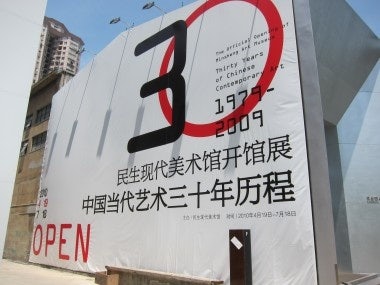Funds Overloaded With Western Artists Have Had Mixed Results In Last Two Years, While Chinese Funds Like Red Coral Have Recorded Gains#

Last June, Jing Daily looked at the growing number of art funds designed to entice skittish investors back into the art market in the wake of the global economic crisis of 2008. As we noted at that time, however, funds overloaded with top Western artists have continued to record mixed success as prices for these artists have remained high yet largely stagnant, reflecting the dynamic in the broader art world. (With the exception of artists like Andy Warhol and Jeff Koons whose works continue to climb upward.) By ignoring one of the most important emerging art and auction markets in the world -- East Asia, and more specifically China -- these funds weren't doing themselves any favors.
We went on to suggest that we'd start to see more home-grown art funds showing up in China, as investors there look for new avenues to diversify their assets, as more are egged on by growing inflation and an interest in -- but poor understanding of -- art:
We’ve already seen investment funds focusing on everything from education to real estate appearing in China, but art investment funds really haven’t materialized yet. However, it’s just a matter of time before they do, and we would assume they’d be well-connected with ascendant mainland Chinese auction houses like Poly and China Guardian as well as East Asian houses like Ravenel, Borobudur and Larasati, picking the best of contemporary Chinese and other Asian art rather than investing heavily in Western art.
This week, the Financial Times looks at the nascent Chinese art fund scene, pointing out that these funds -- which focus solely on collecting Chinese art, both traditional and contemporary -- are tapping the growing interest in collecting art among the country's middle class:
“When a country’s GDP per head reaches US$3,000, its citizens will have [demand for] art investments,” a spokesman for Shanghai-based Noah Wealth Management said. “China’s GDP per head reached $3,100 in 2008. It is a good time to start an art fund now.”
Noah Wealth Management launched a fund in November to invest in Chinese art works such as paintings and ceramics.
Earlier to market was China Minsheng Banking Corporation, which launched its first art fund in June 2007 and a second in July 2009. Beijing-based Zhong Bo Auctions Company and Shanghai-based Terry Art Fund Management also have two funds apiece.
Terry Art’s first fund, Red Coral I, which launched in May 2009, returned 25 per cent in its first year according to Wang Kai, the group’s Shanghai-based chief operating officer. Terry Art’s two funds, Red Coral I & II, invest in Chinese ink paintings, classic oil paintings and contemporary art.
“Art works in China have been neglected for a long time,” says Terry’s Wang. “Compared with those foreign masters, Chinese masters’ works are highly undervalued.”
While these funds are still young, their focus on high-quality Chinese art rather than a desire to pack their funds with artists of varying quality from around the world is a good sign. While their quick turnaround -- Terry Art's fund aims to hold its art for only five years, compared to seven or eight for most Western funds -- is a cause for some concern, as the FT concludes, "If impatient Chinese sellers are selling to impatient Chinese buyers the Chinese art market probably has little to worry about."